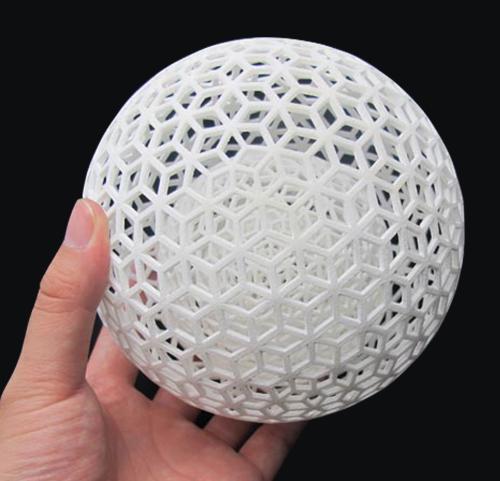If you were given a chance, what items would you use 3D printing for? Is it a toy bag or earring jewelry? In fact, behind every 3D print original product being presented, we must rely on 3D printing technology and equipment to complete.
Ten years have passed since the concept of 3D printing was proposed. From the birth of 3D printing technology in 1986 to the present, after more than 30 years of technology accumulation, two technical genres of metal 3D printing and non-metal 3D printing have been formed globally. The debate about the merits of metal 3D printing and non-metallic 3D printing has also made 3D printing this "quiet lake" rippling.

Most 3D printing manufacturers currently choose SLA and SLM technology paths, and SLM is particularly hot soon. SLM stands for Selective Laser Melting, which is a technology that directly heats metal powder through a laser to melt it through cooling molding completely. Generally speaking, SLM's 3D printing technology is injecting powerful product remodeling capabilities into industrial manufacturing from aspects such as shortening production time, improving functionality, reducing the number of parts, improving design freedom, and improving supply chain management efficiency.
In the metal 3D printing process, the quality of the metal powder is one of the critical factors that affect the structure and performance of the final printed parts. At present, improving the performance of metal powders and product materials has become an essential issue for the industry. After all, the better the quality of the metal powder and the smaller the particle size, the better the compactness and mechanical properties of the printed product.
In a comprehensive comparison, the advantages of non-metallic 3D printing are mainly customizable and moldless, but material properties limit it. It is used for the production of molds and samples, and it is difficult to expand the quantity and price; In addition to the advantages of moldless and customizable, the printing efficiency, printing quality, and printing accuracy are more significantly improved than traditional metal processing techniques. It is worth noting that metal 3D printing can complete the printing of high-complexity and high-precision parts that cannot be made by traditional crafts and has excellent potential for development.
In the automotive field, 3D printing has a vast application space, and the development prospect is promising. Some automobile companies have also begun to use 3D printing technology for interior manufacturing and parts customization under the trend of lightweight and intelligent vehicle manufacturing. Since 1991, BMW has incorporated 3D printed parts into the concept car development system, which shows its forward-looking vision. In the past ten years, BMW has produced 1 million pieces using 3D printing technology, and its output has reached a high level in the automotive industry.
From another perspective, whether it is automobile tires or aerospace, 3D printing technology is inseparable from the development of three critical factors, namely equipment, materials, and technology. The launch of a high-quality product requires not only excellent performance materials but also innovative processes and high stability 3D printers. The spread of non-metallic 3D printing and 3D printing in various fields needs to pay attention to the relationship between technology, equipment, and materials.
From metal printing to non-metal printing, from titanium alloys, 316 stainless steel to non-metallic materials, from bookcases and chairs, cartoons, to aerospace precision parts, highly complex components, the products that can be manufactured by 3D printing The more precise and diverse it becomes. Metal 3D printing and non-metallic 3D printing are like twin brothers, with similarities and differences. In each subdivision scenario, both technologies will continue to "light up" to illuminate the world for industrial upgrading.
According to market research institutions, the 3D printing market will reach USD 55 billion by 2029, which is consistent with the 3D printing market's goal of accounting for approximately 2% of the global manufacturing industry's market value of USD 12 trillion in 2030. Such a vast market space has attracted the attention of many investors. It is easy to find that the pioneers in the industry are jointly painting a brilliant new picture of the 3D printing industry. In the next few years, to better meet the actual needs of users in various industries, the speed of 3D printing technology will be further accelerated, and new application models will blossom.




